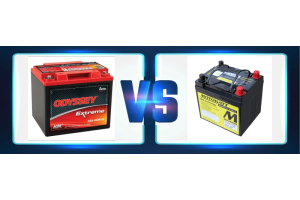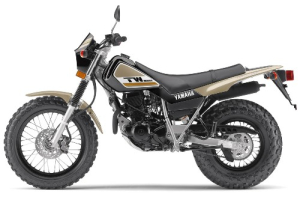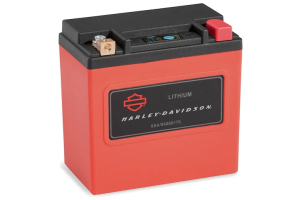What Makes Lifeline Batteries So Great?
 What a great question! What is it about the Lifeline AGM battery that makes them so popular and dependable? RV and boat owners seem to ask for this brand more than any other despite it costing more than other private labels. If it were just a fad, strong marketing or another ‘me-too’ battery this trend would have subsided years ago, but it hasn’t. This type of loyalty can only draw one conclusion…Yes they are that good! Read on as we review the success behind Lifeline batteries.
What a great question! What is it about the Lifeline AGM battery that makes them so popular and dependable? RV and boat owners seem to ask for this brand more than any other despite it costing more than other private labels. If it were just a fad, strong marketing or another ‘me-too’ battery this trend would have subsided years ago, but it hasn’t. This type of loyalty can only draw one conclusion…Yes they are that good! Read on as we review the success behind Lifeline batteries.
Concorde: The Driving Force Behind the LifeLine Battery
Concorde Battery Corporation has been manufacturing batteries just outside Los Angeles, California since 1979. Recently, Concorde opened a second manufacturing facility just outside Atlanta, Georgia. They operate under four application specific brands: Concorde, Lifeline, Chairman and Sun Xtender. The Concorde label designs aircraft batteries and batteries for shipboard use utilized by militaries the world over inclusive of the U.S. Military and several Commonwealth allies including Australian, British and Canadian air forces. Lifeline AGM batteries are tailored to the needs of recreational vehicles and the marine industry. The Chairman brand focuses on backup power especially for electric wheelchairs and the medical applications. The newest battery line, Sun Xtender, is best known for and designed to excel in photovoltaic and renewable energy applications. Other industries that include mining, oil & gas, electric vehicle, telecommunications, stand by and emergency backup systems also utilize these reliable American Made batteries.
All four battery labels incorporate many of the same design and quality features contained in Concorde’s aerospace aviation batteries. So while integrating industry specific design and features, each battery line is built upon the rigorous aviation standards platform [Mil Specs] pioneered by Concorde.
The first AGM, “Air Worthy” batteries were delivered to the U.S. Military in 1985 and today are used on the F-117A Stealth Bomber, F/A- 18 fighter jet, KC-130 Stratotanker to name a few as well as several other demanding military air and naval applications. The heavier “fat plate” Lifelines were introduced in 1989. Today, Lifeline batteries are the most advanced recreational vehicle batteries manufactured in the world. They are subject to the same high standards of design and manufacture as required by FAA and Military Specifications. All of the Concorde products have achieved AS9100 and ISO 9001 certifications. Additionally, Lifeline is the only Advanced AGM product available in standard battery configuration and sizes. They are standard equipment on many U.S. Navy crafts, fine yachts built by Pacific Seacraft, Island Packet, and Hinckley Company to mention three, and quality coaches built by such companies as Vision Coach, Royal Coach and Vantare Coach.
Lifeline Batteries Are Not Gel batteries!
Many well-meaning consumers refer to Lifeline AGM batteries as gel deep cycle batteries. Sadly, many so called professionals repeat the same words! So let’s set the record straight: THE LIFELINE BATTERY IS NOT A GEL BATTERY. THEY ARE SEALED AGM BATTERY. The bliss of ignorance will have to end today as you continue to read and gain knowledge and deeper understanding of battery types.
Gel batteries are similar to the sealed AGM battery (sometimes incorrectly referred to as AMG batteries) in that they utilize oxygen recombination and pressure relief valves to minimize water loss and allow maintenance-free operation. They are both considered to be lead acid batteries…but that’s the end of the similarities. Here is a short [and shocking] list of detrimental gel battery attributes and a great reason why LifeLine batteries are not gel batteries:
• Gel acid batteries are the most likely to suffer irreversible damage from overcharging.
• Gel batteries must be mounted upright to prevent air pockets from forming.
• Internal bubbles and air pockets will cause the plates to burn out.
• They have inferior performance at high discharge rates and low temperatures.
LifeLine is About Durability and Efficiency
To meet the needs of the marine, automotive and RV community Lifeline makes both a sealed AGM deep cycle battery as well as a sealed AGM starting battery. They make a subset of the starting battery designed to maximize crank and provide a 16V option for racing applications.
As many of you already know the much less expensive flooded lead acid batteries are the most likely to suffer from internal shorting and vibration damage. The caustic fumes cause corrosion on the battery terminals and untreated metal nearby. Lifeline Advanced AGM batteries are more durable and can withstand severe vibration, shocks, and fast charging. The majority of the gases are ‘metabolized’ and not discharged from the battery. This prevents corrosion and buildup of explosive hydrogen gas. [Bonus Thought: this does not mean you can use these batteries in a sealed container, you still need adequate ventilation. It just means they can be safely used indoors and are approved for transport on aircraft.]
During overcharge scenarios Lifeline AGM batteries are more resilient than most other types and will resist internal irreversible damage. Unlike gel batteries, AGM batteries cannot and will not develop air pockets leading to plate burnout. Sealed AGM batteries can be placed into service in any position except inverted while gel batteries must remain upright. AGM’s have a low discharge rate and perform well at cold temperatures. The proprietary lead-oxide paste that Concorde engineers developed is one of the biggest contributors to performance and quality.
Probably the most important attribute stems from the batteries internal resistance. Internal resistance of a battery denotes its overall charge/discharge efficiency, its ability to deliver high cranking currents without significant drops in voltage, and is a measure of how well it has been designed and manufactured.
For flooded wet batteries, internal resistance can be as high as 26%, which is the charging current lost to gassing, or breaking up of water. Gel batteries are better at approximately 16% internal resistance and require roughly 116% of rated capacity to be fully charged. Lifeline Advanced AGM has the lowest internal resistance of any battery manufactured at only 2 percent! This allows Lifeline batteries to be charged much faster if needed and also to deliver higher power when required. Owners using high output alternators, operating inverter banks, or relying on solar panels can benefit significantly when using Lifeline Advanced AGM deep cycle batteries with their equipment.
So what makes LifeLine batteries so great? Concorde’s attention to detail, attaining and maintaining the highest battery manufacturing standards and commitment to innovation are what set them apart. Avoiding the temptation to mass produce their batteries ensure consistency with every production run. Not compromising on or replacing the skilled human labor and knowledge is the backbone to their consistent nature. This is why the military, commercial interests, marine operators and retirees all trust in and demand a LifeLine battery be installed. It’s the heart of your system and it’s going to get you home!
| LifeLine | BCI Group | Voltage | Capacity | Minutes of Discharge | Cold Cranking Amps | ||
|---|---|---|---|---|---|---|---|
| Part No. | Size | 20Hr | @25 | @15 | 68F | 0F | |
| GPL-U1T | U1 | 12v | 33 | 50 | 93 | 325 | 215 |
| GPL-24T | 24 | 12v | 80 | 149 | 259 | 800 | 550 |
| GPL-27T | 27 | 12v | 100 | 186 | 324 | 845 | 575 |
| GPL-31T | 31 | 12v | 105 | 195 | 340 | 880 | 600 |
| GPL-31XT | 31 | 12v | 125 | 230 | 455 | 950 | 650 |
| GPL-30HT | 30 | 12v | 150 | 315 | 555 | 1000 | 700 |
| GPL-4DA | 4D | 12v | 210 | 390 | 680 | 1595 | 1100 |
| GPL-4DL | 4D | 12v | 210 | 390 | 390 | 1595 | 1100 |
| GPL-8DL | 8D | 12v | 255 | 550 | 825 | 1975 | 1350 |
| GPL-8DA | 8D | 12v | 255 | 550 | 825 | 1975 | 1350 |
| GPL-4CT | GC2 | 6v | 220 | 492 | 856 | 1095 | 750 |
| GPL-6CT | J305 | 6v | 300 | 692 | 1200 | 1150 | 925 |
| GPL-L16T | L16 | 6v | 400 | 950 | 1625 | 1975 | 1350 |
| GPL-1400T | 12v | 43 | 850 | 550 | |||
| GPL-2400T | 24 | 12v | 75 | 172 | 870 | 650 | |
| GPL-2700T | 27 | 12v | 95 | 206 | 1020 | 745 | |
| GPL-3100T | 31 | 12v | 100 | 228 | 1120 | 810 | |
Related articles that mention Lifeline:
Comparison of Racing Batteries from 2011; GRRReen is no longer in business.
A heartwarming true story of faith and batteries. Some day even a LifeLine battery will will fail, but there is one source of energy that will never fail.





